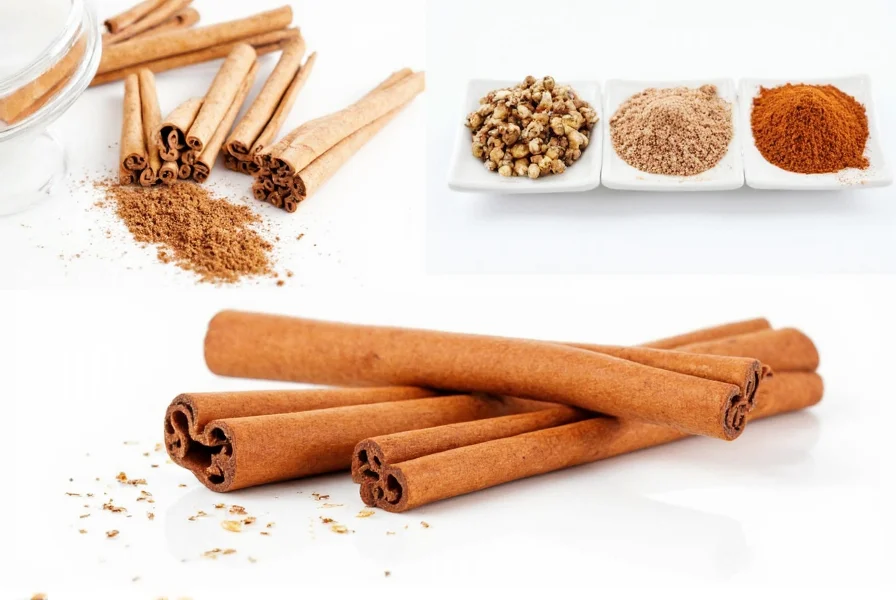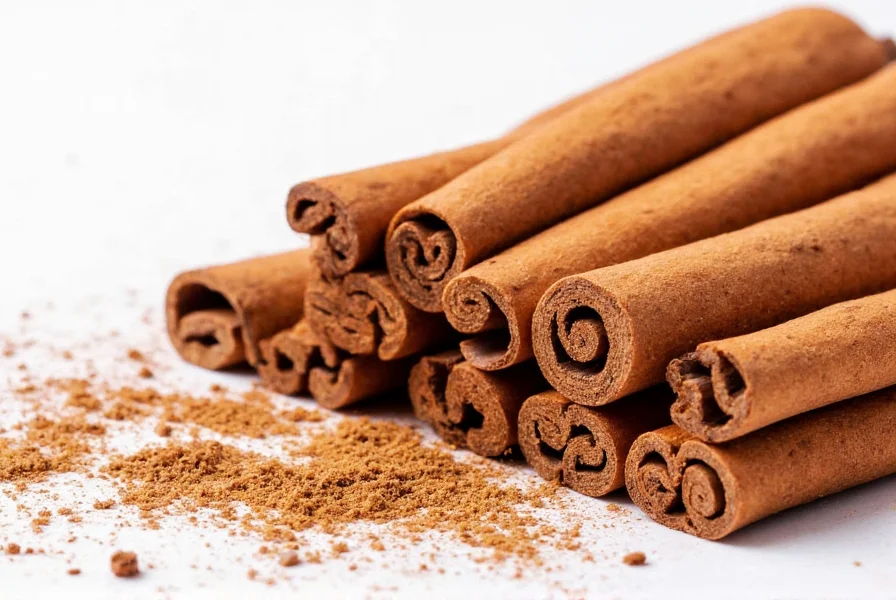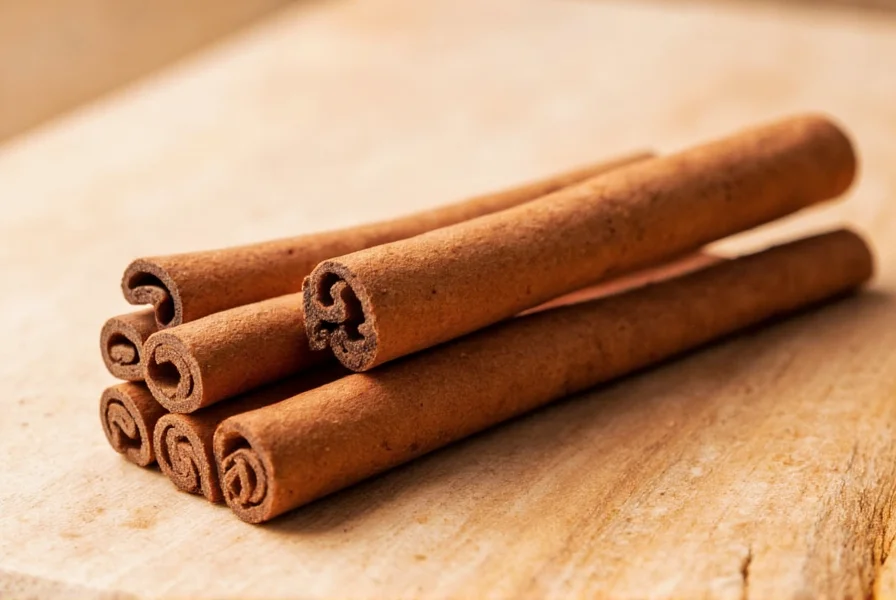Understanding the distinct varieties of cinnamon is essential for both culinary excellence and health-conscious consumption. While many consumers treat cinnamon as a single spice, the reality is far more nuanced. Each cinnamon type possesses unique flavor profiles, physical characteristics, and chemical compositions that significantly impact their culinary applications and health implications.
The Four Main Types of Cinnamon Explained
Ceylon Cinnamon (True Cinnamon)

Originating primarily from Sri Lanka, Ceylon cinnamon (Cinnamomum verum) represents what many experts consider "true" cinnamon. This variety grows in delicate, multi-layered quills that resemble cigar tubes when rolled. The bark is thin and papery, creating a light tan to light brown color. When broken, Ceylon cinnamon reveals multiple fine layers rather than a single thick piece.
Culinary professionals prize Ceylon cinnamon for its complex, citrusy-sweet flavor profile with subtle floral notes and minimal heat. Unlike stronger varieties, it won't overpower delicate dishes. This makes it ideal for desserts, custards, and beverages where a refined cinnamon flavor is desired. Many European and Mexican recipes traditionally call for Ceylon cinnamon.
From a health perspective, Ceylon cinnamon contains significantly lower levels of coumarin—a naturally occurring compound that can cause liver damage in high doses. This characteristic makes it the preferred choice for regular consumption, especially for individuals managing health conditions like diabetes who may use cinnamon supplements.
Cassia Cinnamon (Chinese Cinnamon)

Cassia cinnamon (Cinnamomum cassia), often labeled simply as "cinnamon" in American supermarkets, dominates the global market. Harvested primarily from China, Indonesia, and Vietnam, this variety forms thick, single-layer quills with a rough, bark-like exterior. The color ranges from medium to dark reddish-brown.
Cassia delivers a robust, spicy-sweet flavor with pronounced heat that stands up well in bold recipes. Its intense profile makes it suitable for hearty baked goods, spiced chai, and savory dishes like curries and stews. Most commercial cinnamon products—including ground cinnamon, cinnamon sticks in restaurants, and processed foods—contain Cassia due to its lower cost and stronger flavor.
However, Cassia contains substantially higher coumarin levels than Ceylon. While safe in moderate culinary amounts, regular consumption of large quantities (particularly in supplement form) may pose health risks for sensitive individuals. This difference in coumarin content represents one of the most significant distinctions between cinnamon varieties.
Saigon Cinnamon (Vietnamese Cinnamon)
Saigon cinnamon (Cinnamomum loureiroi), grown primarily in Vietnam, represents the most intense variety commonly available. With the highest essential oil content (approximately 3-5% compared to Cassia's 1-3%), it delivers an exceptionally potent, sweet-spicy flavor with pronounced heat.
Chefs often use Saigon cinnamon when a powerful cinnamon presence is desired, such as in cinnamon rolls, snickerdoodles, or spiced rubs for meats. Its robust character makes it less suitable for delicate applications where subtlety is preferred. Like Cassia, Saigon cinnamon contains high coumarin levels, warranting moderation in consumption.
Korintje Cinnamon (Indonesian Cinnamon)
Korintje cinnamon, another Cassia variety (Cinnamomum burmannii) primarily from Indonesia, features thinner, more flexible quills than Chinese Cassia. It offers a moderately strong flavor profile—less intense than Saigon but stronger than Ceylon—with earthy, woody notes.
This variety frequently appears in commercial ground cinnamon blends due to its affordability and consistent quality. Korintje works well in recipes requiring noticeable cinnamon flavor without overwhelming other ingredients, making it versatile for both sweet and savory applications.
Comparing Cinnamon Types: Key Differences
| Type | Origin | Appearance | Flavor Profile | Coumarin Content | Best Culinary Uses |
|---|---|---|---|---|---|
| Ceylon | Sri Lanka | Multiple thin layers, light tan, delicate quills | Subtle, sweet, citrusy, floral | Very low (0.004-0.1%) | Desserts, custards, beverages, delicate sauces |
| Cassia (Chinese) | China | Thick single layer, dark reddish-brown | Strong, spicy, robust | High (2.1-6.6%) | Baked goods, curries, spiced drinks, commercial products |
| Saigon | Vietnam | Thick, rough bark, dark reddish-brown | Very strong, sweet-spicy, intense heat | Very high (6.0-12.1%) | Cinnamon rolls, spiced rubs, bold baked goods |
| Korintje | Indonesia | Thin flexible quills, medium brown | Moderately strong, earthy, woody | High (1.0-5.0%) | Ground cinnamon blends, versatile cooking applications |
How to Identify Different Cinnamon Types
Many consumers struggle to distinguish between cinnamon varieties, particularly when purchasing ground cinnamon. When buying whole cinnamon sticks, examine the structure: Ceylon forms delicate, multi-layered scrolls, while Cassia varieties create thick, single-layer quills. Ceylon sticks break easily and feel brittle, whereas Cassia sticks are harder and more difficult to crush.
For ground cinnamon, visual identification becomes challenging. The color provides some clues—Ceylon tends to be lighter tan, while Cassia varieties range from reddish to dark brown. However, the most reliable approach involves checking product labels for specific variety identification or purchasing from reputable spice merchants who specify the cinnamon type.
Understanding the difference between Ceylon and Cassia cinnamon is particularly important for health-conscious consumers. Those seeking the potential health benefits of cinnamon while minimizing coumarin exposure should specifically seek Ceylon varieties, often labeled as "true cinnamon" or "Ceylon cinnamon."
Health Considerations Across Cinnamon Varieties
The coumarin content difference between cinnamon types represents a significant health consideration. While coumarin occurs naturally in cinnamon and offers some potential benefits, excessive consumption may cause liver toxicity in sensitive individuals. The European Food Safety Authority recommends a maximum daily coumarin intake of 0.1 mg per kilogram of body weight.
For context, just one teaspoon of Cassia cinnamon may contain up to 5-12 mg of coumarin, potentially exceeding safe limits with regular consumption. Ceylon cinnamon, by contrast, contains minimal coumarin, making it safer for daily use. This distinction proves particularly relevant for individuals using cinnamon supplements or consuming large amounts regularly for potential blood sugar management benefits.
Culinary Applications: Choosing the Right Cinnamon
Selecting the appropriate cinnamon type can dramatically impact your culinary results. For delicate applications like crème brûlée, poached pears, or light cakes, Ceylon cinnamon's subtle flavor won't overpower other ingredients. Its lower coumarin content also makes it preferable for children's recipes or dishes intended for regular consumption.
When preparing bold recipes like snickerdoodles, cinnamon rolls, or spiced meat rubs, Saigon or Cassia cinnamon provides the intense flavor presence required. Their stronger profiles stand up to other robust ingredients and maintain their character through cooking processes.
For everyday cooking where moderate cinnamon flavor is desired, Korintje offers a versatile middle ground. Many professional chefs maintain multiple cinnamon varieties in their pantries, selecting based on the specific recipe requirements—a practice home cooks can emulate for optimal results.
Storage and Quality Preservation
Proper storage significantly impacts cinnamon's shelf life and flavor retention. Store cinnamon sticks or ground cinnamon in airtight containers away from light, heat, and moisture. Whole sticks maintain their potency longer than ground cinnamon—up to 3-4 years versus 1-2 years for ground.
Freezing cinnamon can extend its shelf life, particularly for less frequently used varieties like Ceylon. When stored properly, high-quality cinnamon should retain its characteristic aroma and flavor. Stale cinnamon loses its potency and develops a musty odor, indicating it's time for replacement.











 浙公网安备
33010002000092号
浙公网安备
33010002000092号 浙B2-20120091-4
浙B2-20120091-4